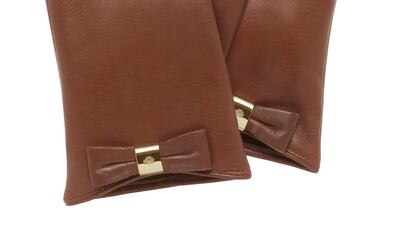Melissa George attended Paris Fashion Week 2017 wearing shoulder-length gloves. It’s perhaps fitting that the actress paired these with a Schiaparelli dress, considering it was French designer Elsa Schiaparelli who led the comeback of 20-button opera gloves, after they were all but abandoned in the 1930s.
Before then, from the 1800s to the 1920s, gloves were an almost compulsory part of a lady’s attire. Gloves were part of the outfits worn by the royalty, clergy and nobility until the 14th century, after which they were worn by all classes and both genders. In fact, one can trace the history of this humble accessory all the way back to 1400BC, to the tomb of Tutankhamen, who was unearthed wearing a plaited pair with a scale-motif design. It is likely also that cavemen fashioned crude versions from untreated animal skins. However, historians believe that these were mainly used only when our first forefathers were dealing with sharp instruments, and not so much to brave the elements or, er, to look fashionable.
Fabrics and embellishments, too, have evolved over the ages. Raw hide and sack cloth gave way to gloves fashioned from leather in the 12 century, a material that has endured until this day. Gloves were also made from the skins of lamb, calves, hares, chickens and even dogs – a sign of fidelity.
Scented gloves were popular in Europe in the 1700s, which was also a time both men and women lined their overnight gloves with unguents to soften the skin.
Embroidered, fringed and gem-encrusted gloves, meanwhile, dipped in and out of fashion, as is still evident on the runways of modern-day Paris.
____________________
Read more:
____________________


